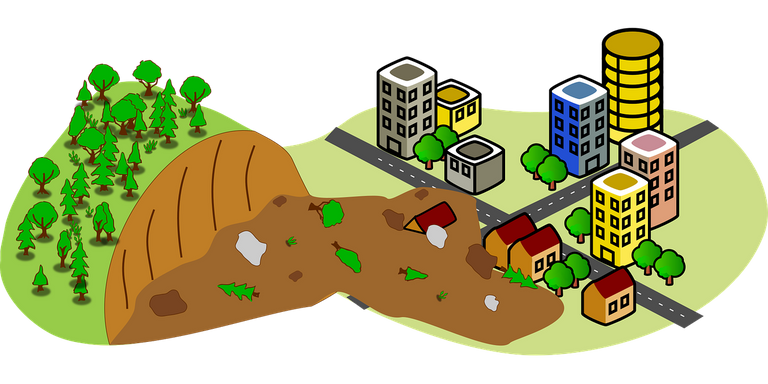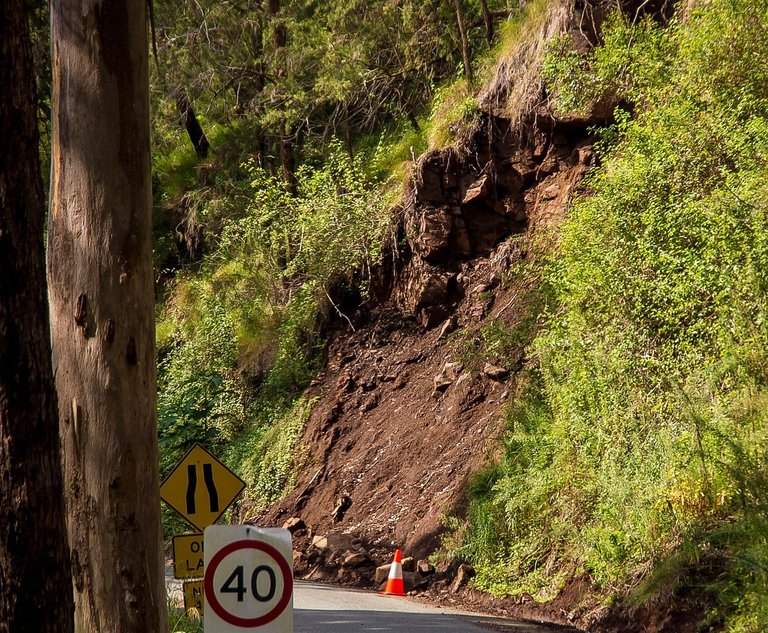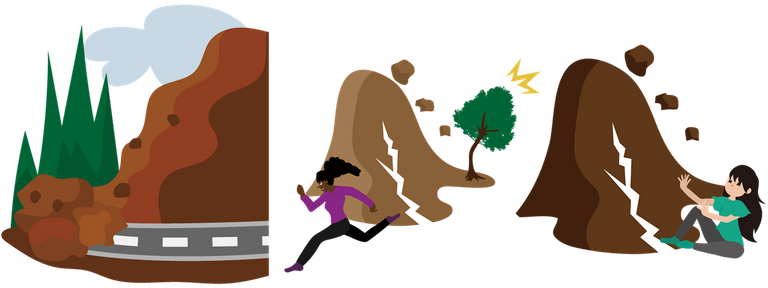ALERT! GEOLOGICAL RISKS IN CITIES [ENG]

One of the most common are the slope movements caused in most cases by anthropic action. In my place of residence it is easy to appreciate the presence of landslides which have caused damage to different infrastructures such as roads and homes.
Slope phenomena or slope movements are displacements of masses of land or rocks that are on a slope. They are due to the instability of the materials that form the slope. These displacements occur in the direction of the slope as a consequence of the force of gravity.
Different hillside phenomena can be differentiated according to the type of movement by which the materials move:
• Landslides: They occur when a large mass of unstable land slides without losing contact on another stable mass in favor of the slope. Landslides can be translational (when displacement occurs along a flat rupture surface) or rotational (when displacement occurs along a curved or concave rupture surface).
• Landslides: It is a rapid and vertical movement of materials because the slope is very steep or even vertical.
• Flow movements: They are all those slope movements that have in common the internal and continuous deformation of the material and the absence of a net displacement surface. These may include:
• Creeping: It is a very slow movement that occurs in the upper layers of clayey slopes. It is related to seasonal moisture variation processes in the soil, since water favors this phenomenon by acting as a lubricant.
• Solifluction: Consisting of the massive and slow displacement of the ground because it has acquired plasticity and fluidity, behaving in a similar way to that of a viscous liquid.
• Complex Movements: These are movements resulting from the combination of two or more types of movements described above.

Factors that affect them
There are several factors that influence landslides.
The main factors referring to the structure of the slope are gravity, the inclination of the slope, the disposition of the strata parallel to the slope and the alternation of strata with different permeability.
There are also external factors such as the climate of the area, the use of the soil by humans and the absence of vegetation, since the vegetation absorbs rainwater, prevents runoff and favors the support of the land.
In addition, there are triggering factors for hillside phenomena such as water, earthquakes, erosive processes and anthropic actions.

But how to prevent them?
The slope movements pose a geological risk to the population and their property. To reduce the chances of this risk materializing, it is necessary to carry out a series of preventive measures. These measures are mainly based on the use of engineering structures as protection. There are two classes:
- Active structural protection: Within active protection are nets, retaining walls, metal mesh, anchors and any protection that exerts an action on the unstable element to fix it.
- Passive structural protection: Includes dynamic barriers and any structure that does not prevent the event from triggering but does retain it before it reaches any threatened population.
without more this has been another collaboration to the community of The Science Scoop.
thank you nony